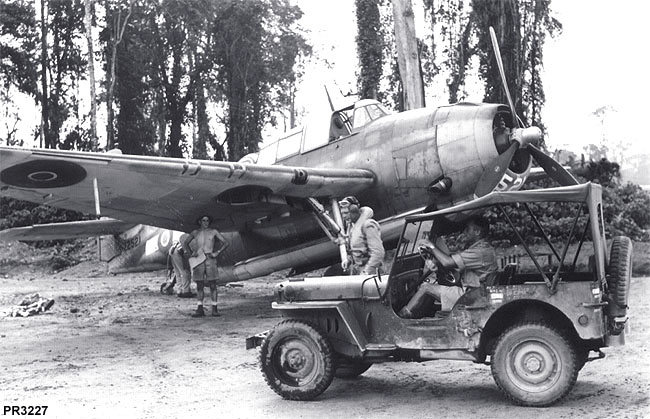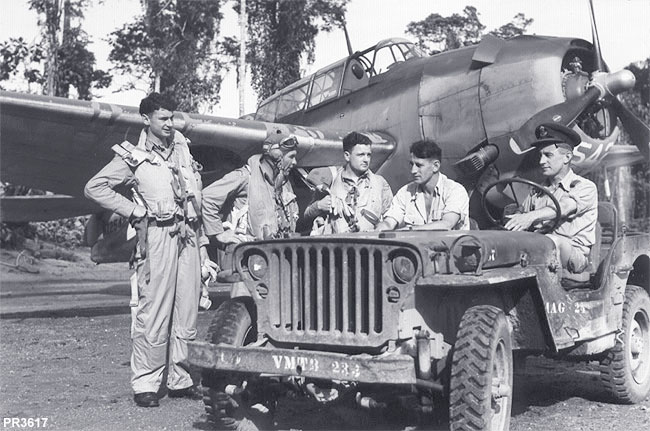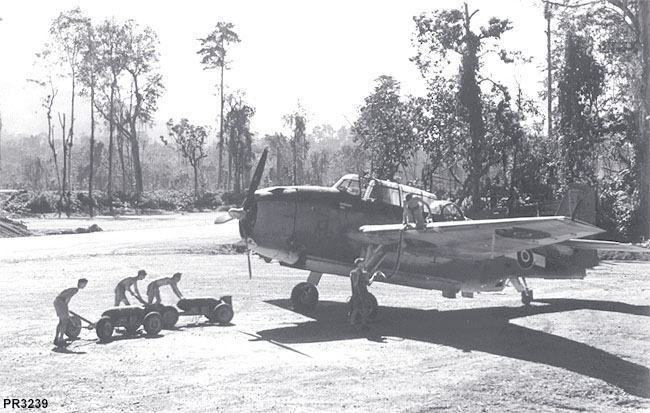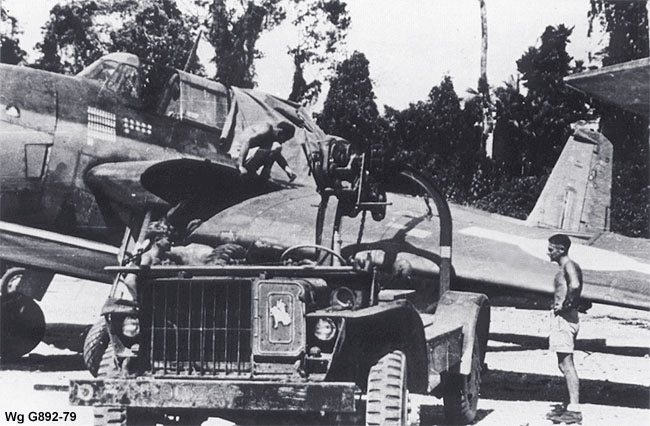|
31 Squadron 31 Squadron, which had joined 30 Squadron at Darton Field in December 1943, went straight from training in New Zealand to replace 30 Squadron at Piva on the 25th of May, 1944. On their first mission, on the 28th of May against Vunakanua strip, they lost NZ2530 and it's crew of pilot F/Lt. M.R. Greenslade, navigator Lt. J.C.Morrison RNZNVR and gunner F/Sgt. W.G. McLeod. Many of the other aircraft on this strike sustained both major and minor damage with several crew receiving wounds. On the 31st of May, NZ2521 was lost with it's
crew of pilot Sgt. W.A. Trolove, navigator F/Sgt. F.H. Brown and
gunner F/Sgt. M.A. Harsant.
"Plonky", NZ2518, was the next casualty, being shot down with her crew of pilot F/Lt. G.G. Prior, navigator F/O. Clayton and gunner W/O. T.R. Scarlett on the 5th of June. After all the damage she had sustained when flying with 30 Squadron, and always getting her crew home, her time had run out. This aircraft had even been mentioned during 30 Squadrons' tour in one of "Tokyo Roses" broadcasts, claiming that "Plocky" would soon be shot down. During this period, one target was the Japanese
vegetable gardens around Rabaul, which were sprayed with diesel and then set
on fire by bombing or gunfire in an effort to further reduce Japanese food supplies. Initially this duty had been carried out by a U.S.Navy Squadron, VT305, but on their departure, the task was handed over to 31 Squadron. These missions were denoted by the addition of a watering can symbol to the bomb tally painted on the TBF's cowlings. 31 squadron lost their 4th aircraft, NZ2512, on the
1st of July when it was shot down near Rabaul. Only the pilot, F/Sgt.
M.S. Aitchison was to survive. After bailing out and landing on dry ground,
he took to the sea in his rubber dinghy, and after several days was picked up
by a U.S Navy gunboat. The navigator, F/Sgt. A.F. Walker and the
gunner, F/Sgt. R.T. Mathison unfortunately went in with the aircraft.
31 Squadron carried out the last mission of their tour on the 23rd of July, luckily with no further casualties. Over the next few days, 30 Servicing Unit checked over the aircraft to prepare them for the ferry flight back to New Zealand as it had been decided that due to the F4U Corsairs of the RNZAF fighter squadrons being able to carry out most of the same tasks, the risks to the slower TBF's were now too high. On the 27th of July, 31 Squadron began the long flight back to New Zealand, and the RNZAF's operations using the Avenger had come to a close. On the 29th, the bulk of 30 Servicing Unit flew to Guadalcanal on C47's to prepare for a new role servicing F4U Corsairs. |



